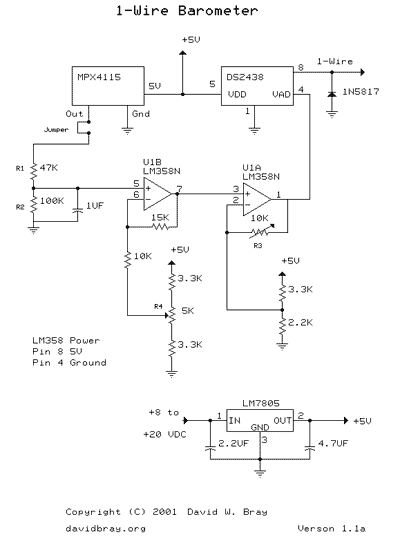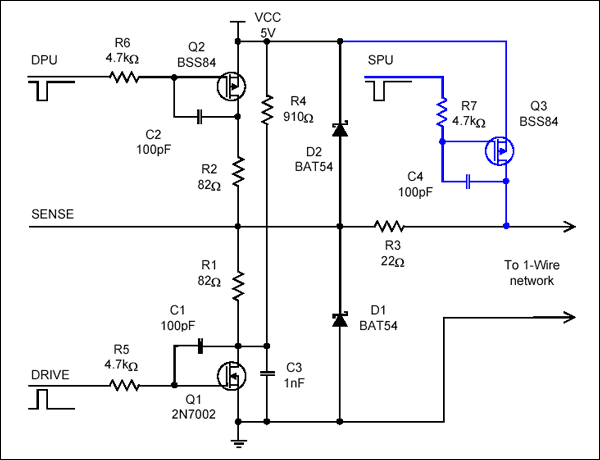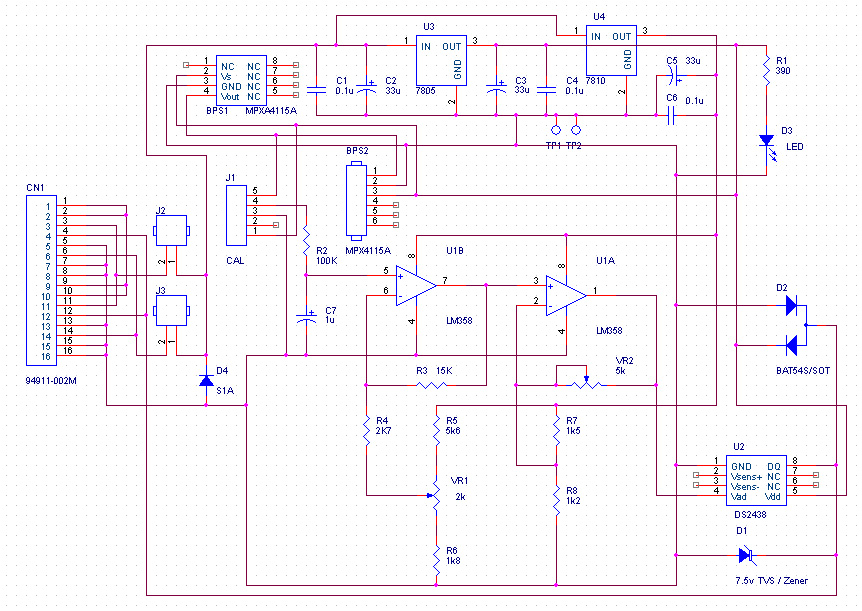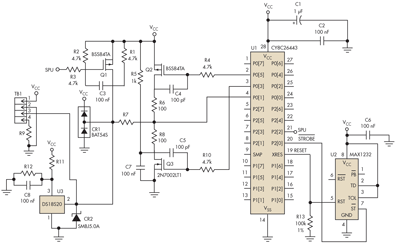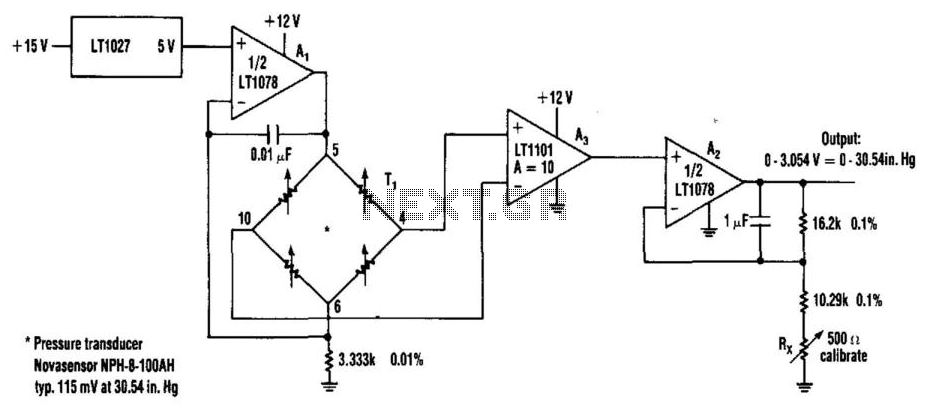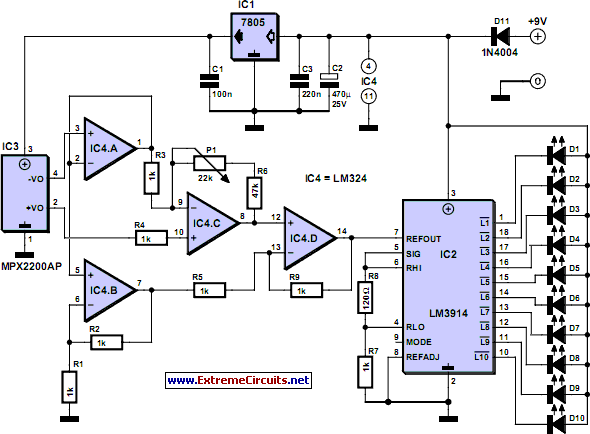
1-Wire Barometer
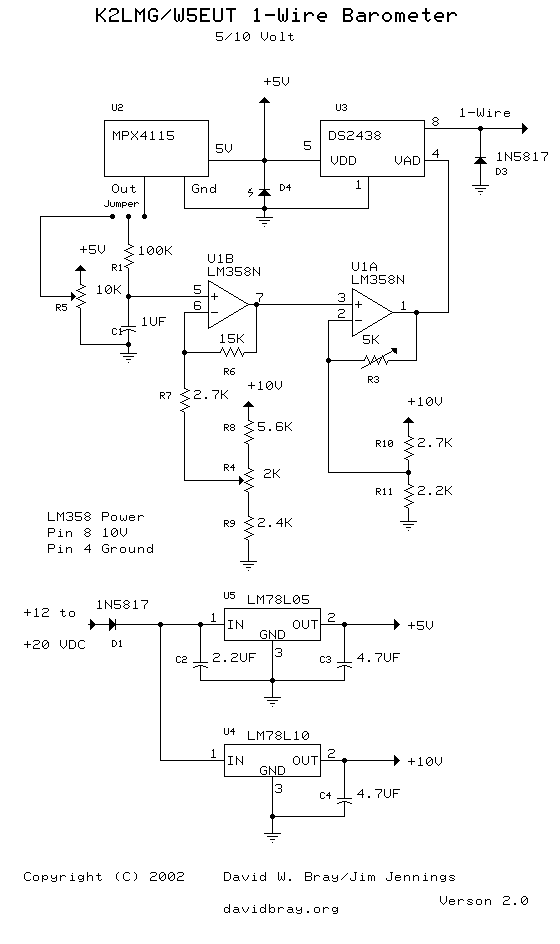
Construction of a 1-Wire Barometer. This page shows the circuit and provides construction and calibration details. This barometer connects to a Dallas Semiconductor 1-Wire network.
The 1-Wire Barometer is designed to measure atmospheric pressure and transmit this data over a 1-Wire network, which is commonly used for sensor applications due to its simplicity and low wiring requirements. The circuit typically includes a pressure sensor, a microcontroller, and the necessary interfacing components to ensure compatibility with the 1-Wire protocol.
The pressure sensor, often a piezoresistive or capacitive type, converts the atmospheric pressure into a proportional electrical signal. This signal is then processed by a microcontroller, which performs analog-to-digital conversion to obtain a digital representation of the pressure reading. The microcontroller also manages the communication over the 1-Wire network, sending the pressure data to a central controller or display unit.
Construction details include the selection of appropriate components, such as the microcontroller (often from the Microchip or Atmel families), and the pressure sensor, which should be chosen based on the desired pressure range and accuracy. The circuit design must ensure proper power supply decoupling and include pull-up resistors on the 1-Wire bus to maintain signal integrity.
Calibration of the barometer is essential for accurate readings. This process involves comparing the sensor output against known pressure standards and adjusting the software algorithms in the microcontroller to compensate for any deviations. Calibration may also involve temperature compensation, as temperature variations can affect sensor readings.
This 1-Wire Barometer can be integrated into larger environmental monitoring systems, allowing for remote data collection and analysis, making it suitable for applications in meteorology, agriculture, and HVAC systems.Construction of a 1-Wire Barometer. This page shows the circuit, and gives construction and calibration details. This barometer connects to a Dallas Semiconductor 1-Wire network. 🔗 External reference
The 1-Wire Barometer is designed to measure atmospheric pressure and transmit this data over a 1-Wire network, which is commonly used for sensor applications due to its simplicity and low wiring requirements. The circuit typically includes a pressure sensor, a microcontroller, and the necessary interfacing components to ensure compatibility with the 1-Wire protocol.
The pressure sensor, often a piezoresistive or capacitive type, converts the atmospheric pressure into a proportional electrical signal. This signal is then processed by a microcontroller, which performs analog-to-digital conversion to obtain a digital representation of the pressure reading. The microcontroller also manages the communication over the 1-Wire network, sending the pressure data to a central controller or display unit.
Construction details include the selection of appropriate components, such as the microcontroller (often from the Microchip or Atmel families), and the pressure sensor, which should be chosen based on the desired pressure range and accuracy. The circuit design must ensure proper power supply decoupling and include pull-up resistors on the 1-Wire bus to maintain signal integrity.
Calibration of the barometer is essential for accurate readings. This process involves comparing the sensor output against known pressure standards and adjusting the software algorithms in the microcontroller to compensate for any deviations. Calibration may also involve temperature compensation, as temperature variations can affect sensor readings.
This 1-Wire Barometer can be integrated into larger environmental monitoring systems, allowing for remote data collection and analysis, making it suitable for applications in meteorology, agriculture, and HVAC systems.Construction of a 1-Wire Barometer. This page shows the circuit, and gives construction and calibration details. This barometer connects to a Dallas Semiconductor 1-Wire network. 🔗 External reference
